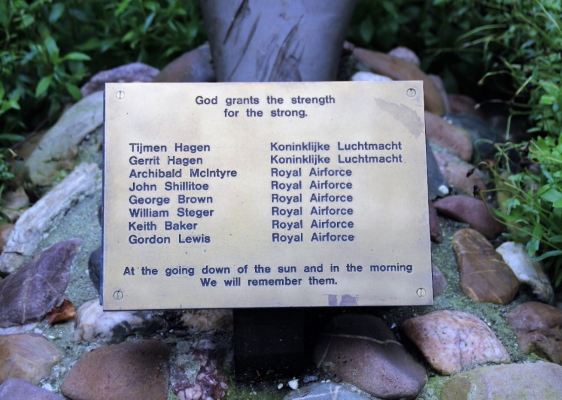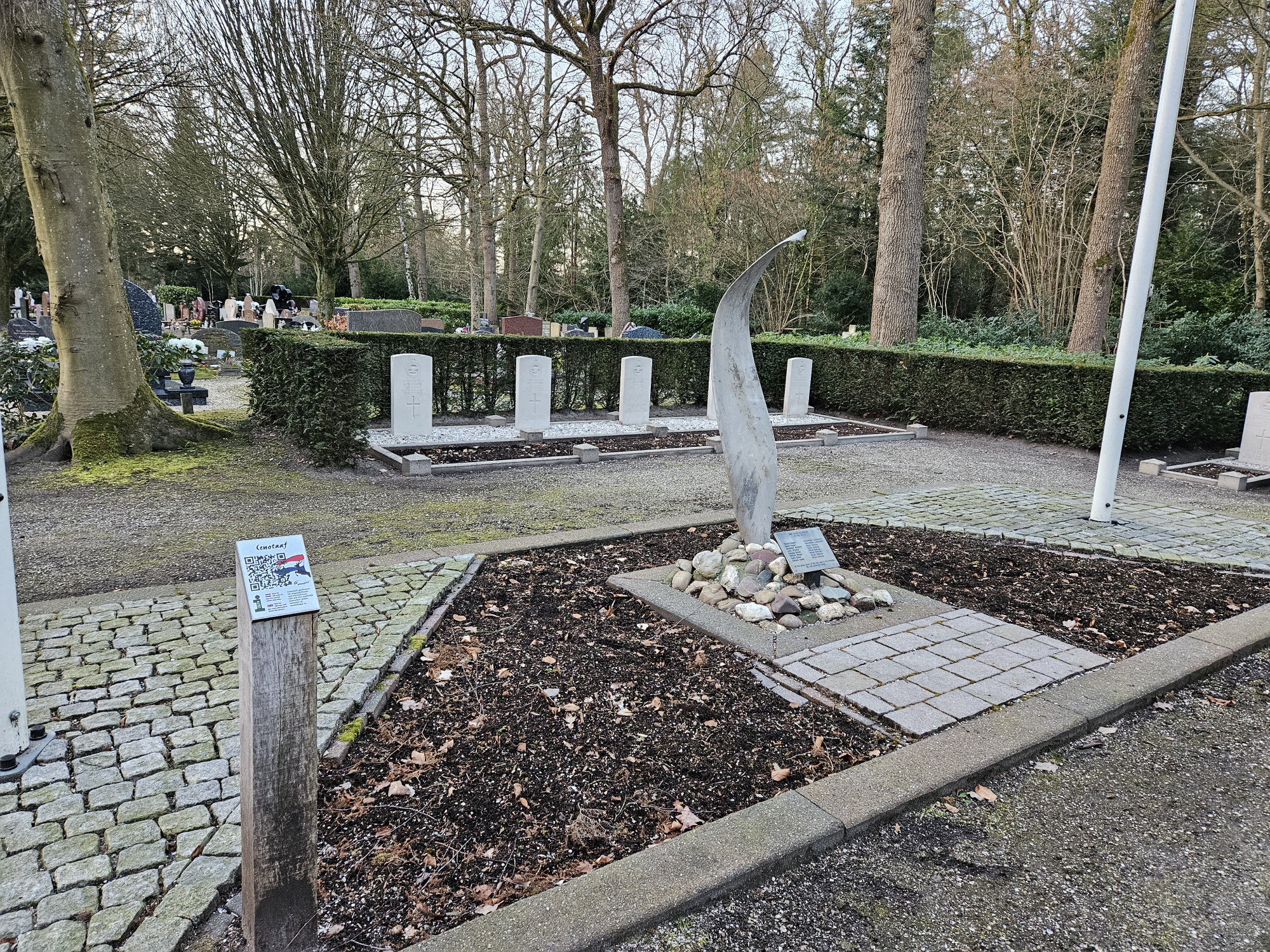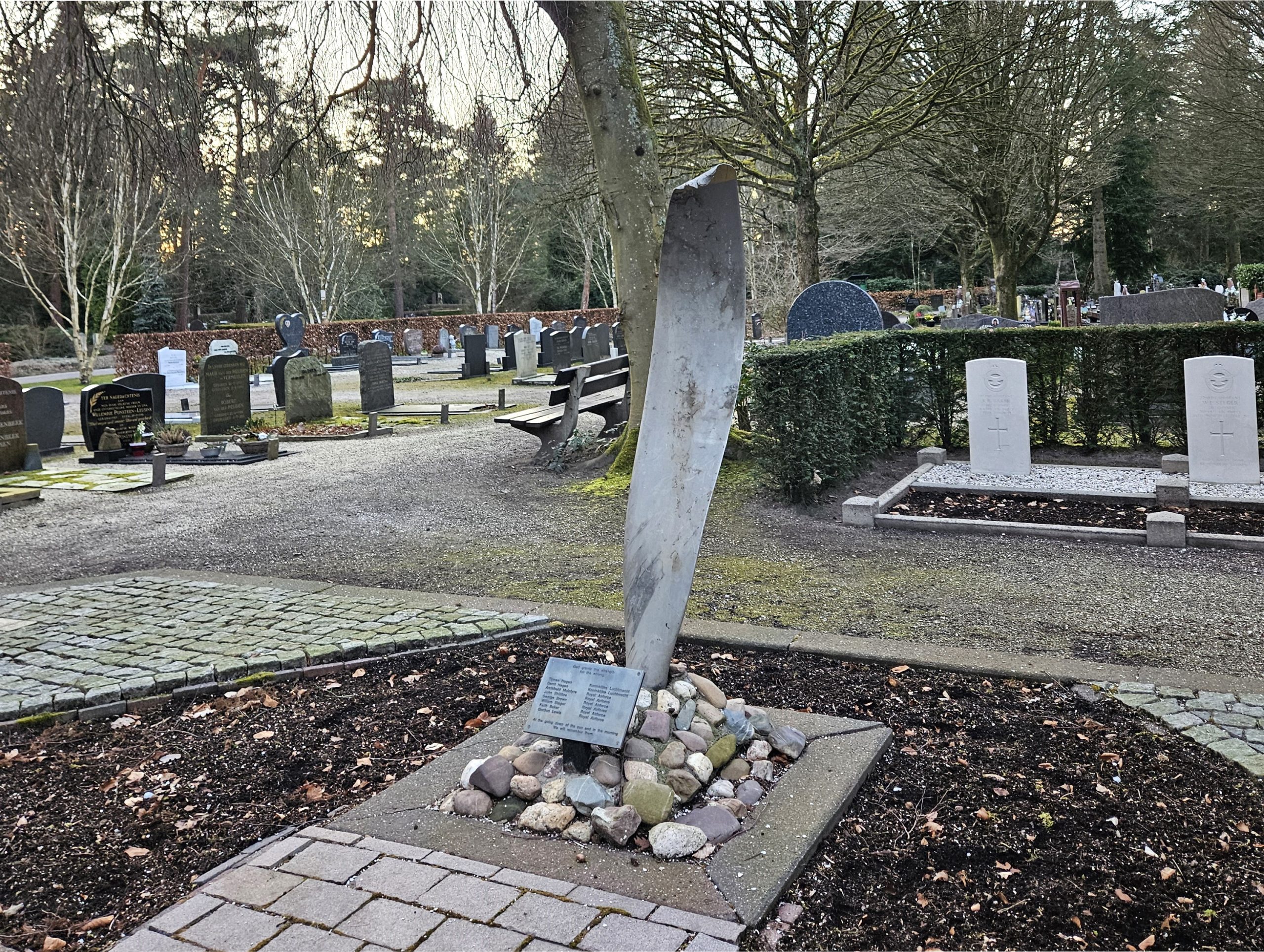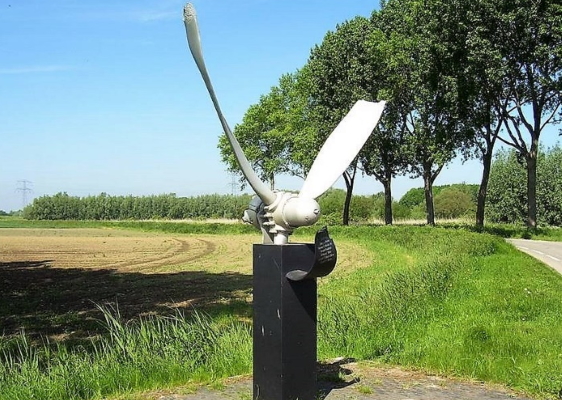Cenotaph at British war graves
The General Cemetery Nunspeet-Oost contains six graves of British soldiers who died on the territory of the municipality of Nunspeet.
It was the wish of two Nunspeet war veterans Willem van Well (died 20 October 2011) and Jan Scheepstra (died 18 August 2007) to make these graves more suitable for commemorations. The planting was adjusted, two flagpoles were placed and thanks to the cooperation of the Recovery Service of the Royal Netherlands Air Force, they received a propeller. A concrete base was made at the municipal yard where the propeller blade was inserted. The Royal Netherlands Air Force provided a plaque with eight names and texts.
The unveiling on 2 May 2006 was performed by mayor D.H.A. van Hemmen and the two initiators. The plaque contains the names of the six British soldiers. The names of two residents of Nunspeet, who died as soldiers in the May days of 1940, have been added. The graves are included in the ‘silent march’ at the 4 May commemoration. A commemoration is also held on Poppy Day around 11 November.
A cenotaph is a grave marker that has been erected since classical antiquity in memory of deceased persons whose remains are elsewhere or cannot be found. More information about the six English soldiers can be found in these War Memories under the headings Kienschulpenweg, Oosteinderweg and Oudeweg (Zilverbeekje).
Origin of propeller blade
This propeller blade comes from a Halifax bomber that crashed near Hank (municipality of Werkendam) on the way back from a bombing raid on Aachen on 24/25 May 1944. The tail section and the remains of two crew members were recovered. In 1953, they were buried at the Jonkerbos Field of Honour in Nijmegen. The rest of the Halifax and the remaining five occupants were recovered in September 2005. The funeral in Nijmegen took place on 27 September 2006. That day, a monument was also unveiled near Hank.







